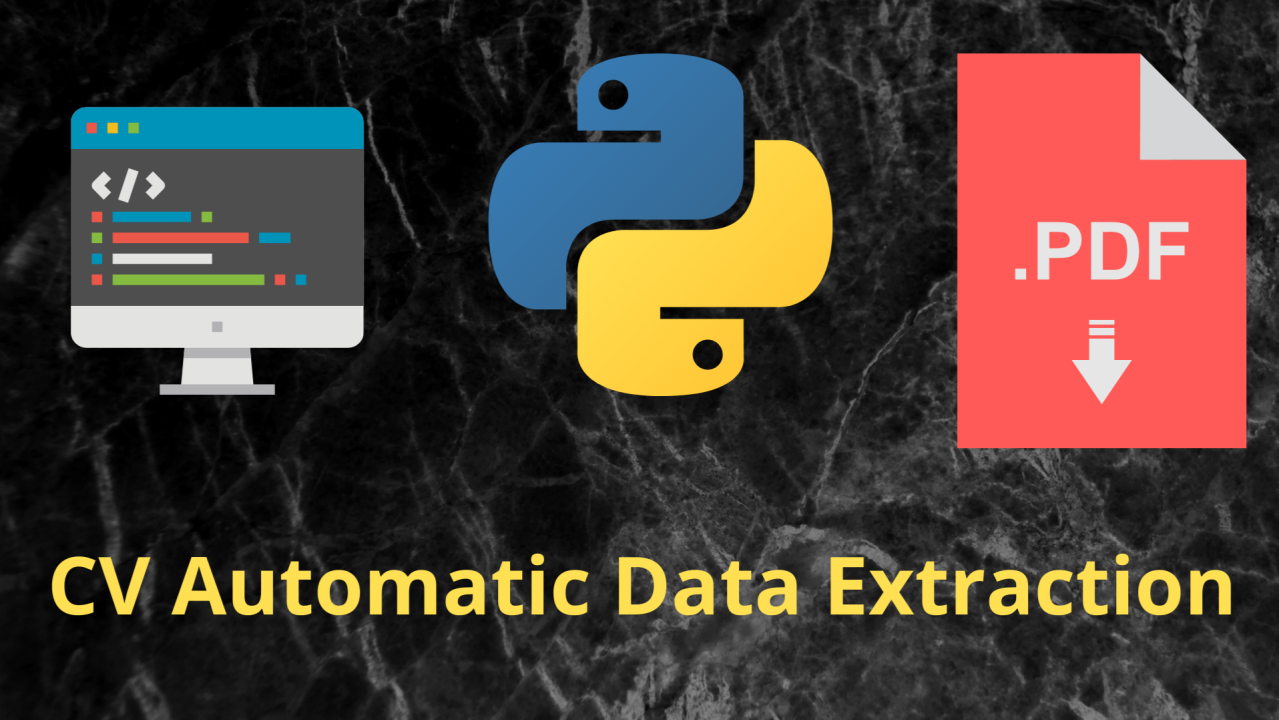
Automating PDF Data Extraction for Recruiters: A Python Guide for Parsing?Resumes
Kevin Meneses
SAP CX Senior Consultant |SAP Sales and Service Cloud|CPI|CDC|Qualtrics|Data Analyst and ETL|Marketing Automation|SAPMarketing Cloud and Emarsys
Introduction
In today’s digital world, most essential documents?—?from contracts to resumes?—?come in PDF format. While PDFs are great for preserving a document’s design and structure, extracting data from them can be tricky, especially when you need to quickly access specific information. Imagine you’re a recruiter with a pile of resumes in PDF format, and you need to extract key details like names, emails, skills, and experience. Automating this process can save you hours of manual work.
In this article, we’ll walk through how to extract critical data from a PDF resume using Python and the pdfplumber library. This can significantly streamline your workflow, allowing you to focus on assessing candidates rather than data entry.
Advantages of Automating PDF Data Extraction
Automating PDF data extraction offers several key benefits:
Common use cases for automated PDF data extraction include:
The Code: Extracting Information from a Resume in PDF?Format
Let’s build a Python script that reads a resume in PDF format and extracts key information for recruiters, such as name, email, phone number, skills, professional experience, education, and languages.
the PDF example looks like
Step 1: Install Required Libraries
For this project, we’ll use pdfplumber to handle the PDF and Python's re library for regular expressions to search for specific patterns like emails or phone numbers.
pip install pdfplumber
领英推荐
Step 2 Code Implementation
import pdfplumber
import re
def extract_info_from_pdf(file_path):
with pdfplumber.open(file_path) as pdf:
text = ''
for page in pdf.pages:
text += page.extract_text()
# Functions for extraction
def extract_email(text):
match = re.search(r'[\w\.-]+@[\w\.-]+', text)
return match.group(0) if match else "Not found"
def extract_phone(text):
match = re.search(r'(\+\d{1,3}\s?\d{1,3}[\s-]?\d{3}[\s-]?\d{3,4}[\s-]?\d{3,4})', text)
return match.group(0) if match else "Not found"
def extract_name(text):
match = re.search(r'(KEVIN MENESES GONZáLEZ)', text, re.IGNORECASE)
return match.group(0).strip() if match else "Not found"
def extract_skills(text):
match = re.search(r'SKILLS\s*(.*?)\s*(LANGUAGE|EDUCATION)', text, re.S | re.IGNORECASE)
return match.group(1).strip() if match else "Not found"
def extract_experience(text):
match = re.search(r'WORK EXPERIENCE\s*(.*?)\s*(SKILLS|EDUCATION)', text, re.S | re.IGNORECASE)
return match.group(1).strip() if match else "Not found"
def extract_education(text):
match = re.search(r'ACADEMIC\s*(.*?)\s*(SKILLS|LANGUAGE)', text, re.S | re.IGNORECASE)
return match.group(1).strip() if match else "Not found"
def extract_languages(text):
match = re.search(r'LANGUAGE\s*(.*?)\s*(SKILLS|EDUCATION)', text, re.S | re.IGNORECASE)
return match.group(1).strip() if match else "Not found"
# Extract different fields
name = extract_name(text)
email = extract_email(text)
phone = extract_phone(text)
skills = extract_skills(text)
experience = extract_experience(text)
education = extract_education(text)
languages = extract_languages(text)
# Print the results
print("Name:", name)
print("Email:", email)
print("Phone:", phone)
print("Skills:", skills)
print("Work Experience:", experience)
print("Education:", education)
print("Languages:", languages)
# Path to the PDF file
pdf_path = r'C:\Users\kevin\OneDrive\Desktop\youtube_scripts\CV_KEVIN_MENESES_DATA_ANALYST (2).pdf'
extract_info_from_pdf(pdf_path)
Code Explanation
The Challenges of PDF Extraction
While the automation process can be very efficient, working with PDFs is not without its challenges. One of the biggest difficulties is the variety of PDF formats. The structure and layout of PDFs can vary greatly, making it tricky to develop a one-size-fits-all solution for data extraction.
For example, in this script, extracting the name is handled using a hard-coded pattern (KEVIN MENESES GONZáLEZ), which is obviously not a scalable solution. This approach was used here as a shortcut to demonstrate how the extraction works, but in a real-world scenario, the code would need to be improved to handle different names or formats.
Additionally, the text in PDFs can sometimes be split or arranged unexpectedly, making it difficult for regular expressions to match the patterns accurately. Therefore, testing your code on multiple PDFs and refining your extraction logic as needed is important.
The result is the following:
Conclusion
Automating data extraction from PDFs can be an incredibly powerful tool in industries such as recruitment, accounting, and legal services. By using Python, we can quickly extract important information from resumes, invoices, and contracts, saving hours of manual work and minimizing errors.
That said, working with PDFs comes with its own set of challenges due to the variety in their structure. In our example, extracting the name was not ideal, and improving this logic is essential for broader applications. Nonetheless, this guide provides a foundation to start automating your workflow and can be easily adapted for more advanced use cases.
Follow me on Linkedin https://www.dhirubhai.net/in/kevin-meneses-897a28127/ Subscribe to the Data Pulse Newsletter